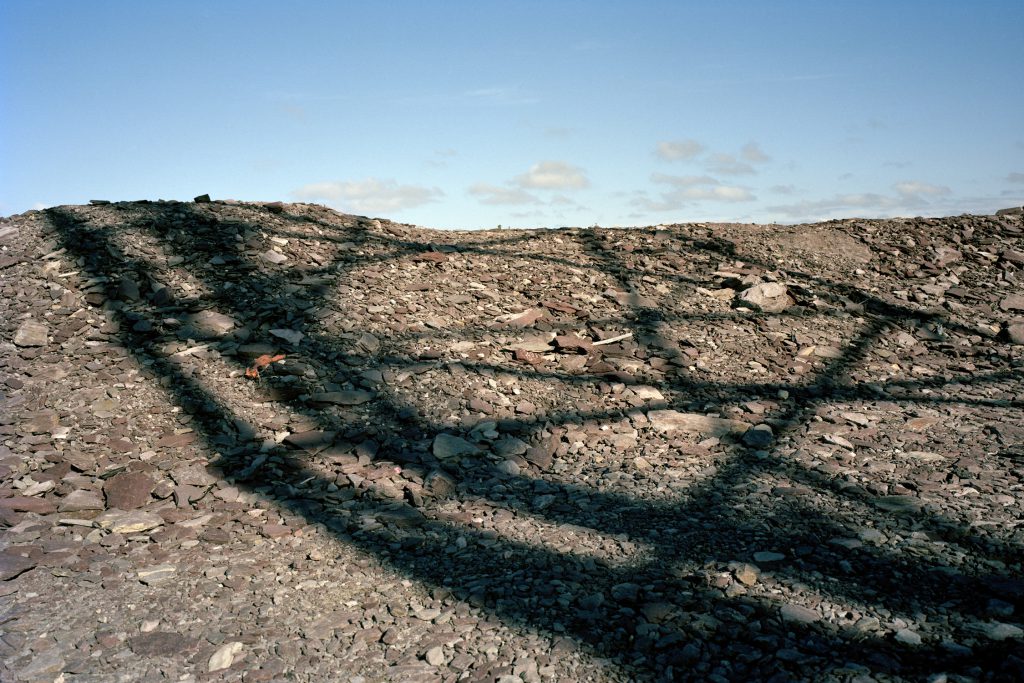Steve Payne
NÉ À Harbour Grace, TN
HABITE À Harbour Grace, TN et Toronto, ON


NÉ À Harbour Grace, TN
HABITE À Harbour Grace, TN et Toronto, ON
Isthmus 2014–2017
Photographie
Site 21 – Old Post Office, Port Rexton
« L’isthme d’Avalon, c’était la limite du monde connu, un lieu de confluence, de turbulence. » Wayne Johnston, Baltimore’s Mansion.
Ces mots saisissent bien l’essence de l’isthme d’Avalon qui a fasciné le photographe Steve Payne. Dans son travail documentaire et ses essais visuels, il s’est intéressé à l’évolution rapide du paysage culturel et de l’environnement, ainsi qu’à la disparition des repères sociaux. Son œuvre sur Terre-Neuve comprend False Fronts, un essai architectural, et The Last Stands, un regard nostalgique sur les petits postes de taxis qui desservaient la région de St. John’s. Isthmus est son interprétation la plus récente des lieux en mutation.
Terre-Neuve a connu de profondes transformations : effondrement de la pêche à la morue, exode de travailleurs forcés de s’expatrier en laissant leur famille au pays, essor soudain de l’exploration pétrolière au large, puis diminution des revenus pétroliers. L’isthme, qui relie la péninsule d’Avalon au reste de Terre-Neuve, illustre bien les changements sociaux et physiques qui surviennent dans les régions rurales. À proximité de sa dizaine de villages ont surgi une fonderie de nickel, une raffinerie de pétrole et un chantier de construction de plateformes de forage qui ont remplacé la pêche. Les essais visuels de Steve Payne captent les gens et les lieux en utilisant la composition formelle, la lumière, les textures de l’habitat, le terrain rude et rocailleux et souvent des détails subtils pour illustrer cette époque de transition. PG
Steve Payne, Isthmus, 2014-2017. 24 épreuve chromogènes, dimensions variables 28 x 43 cm (11 x 17 po) et 51 x 76 cm (20 x 30 po).



BORN Harbour Grace, NL
LIVES Harbour Grace, NL and Toronto, ON
Isthmus 2014–2017
Photography
Site 21 – Old Post Office, Port Rexton
“The Isthmus of Avalon. The isthmus. It was the edge of the known world, and looked it. The word itself evoked the place…It was a place of confluence, turbulence.” Wayne Johnston, Baltimore’s Mansion
Johnston’s words capture the essence of the Isthmus of Avalon that attracted photographer Steve Payne. In documentary work and visual essays, he has been drawn to cultural landscapes, fast-changing environments and disappearing social markers. Examples in his Newfoundland photography include a gentle architectural essay, False Fronts, and The Last Stands, an elegy for the small taxi stands once prevalent in the St. John’s area. Isthmus is his latest examination of change and place.
Newfoundland has undergone profound changes: collapse of the cod fishery; out-migration; the stressful compromise of workers going to jobs “away” while families stay here; explosive offshore oil development and wealth; now a decline in oil revenues. The Isthmus, which connects the Avalon Peninsula to the rest of Newfoundland, reflects the physical and social changes in rural areas. Its dozen communities were based on the fishery. Now an oil refinery, a nickel smelter and an industrial shipyard sometimes serving the oil industry have supplanted the fishery as employers. Payne’s visual essay records people and place using formal composition, light, the textures of inhabited landscape and brutal terrain, and often subtle detail to reflect on a time of transition. PG
Steve Payne, Isthmus, 2014-2017. 24 chromogenic prints, dimensions variable 28 x 43 cm (11 x 17”) and 51 x 76 cm (20 x 30”).
